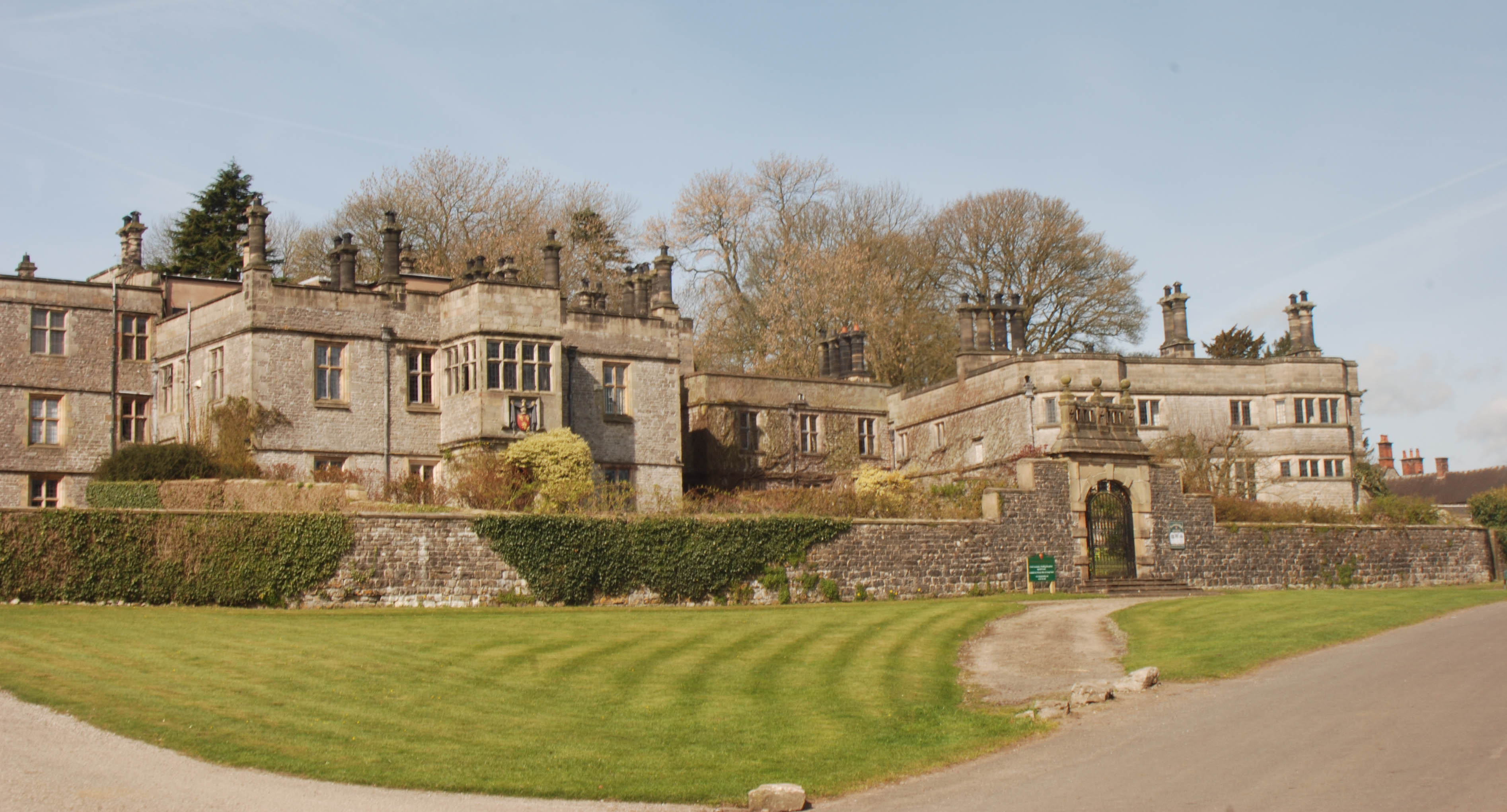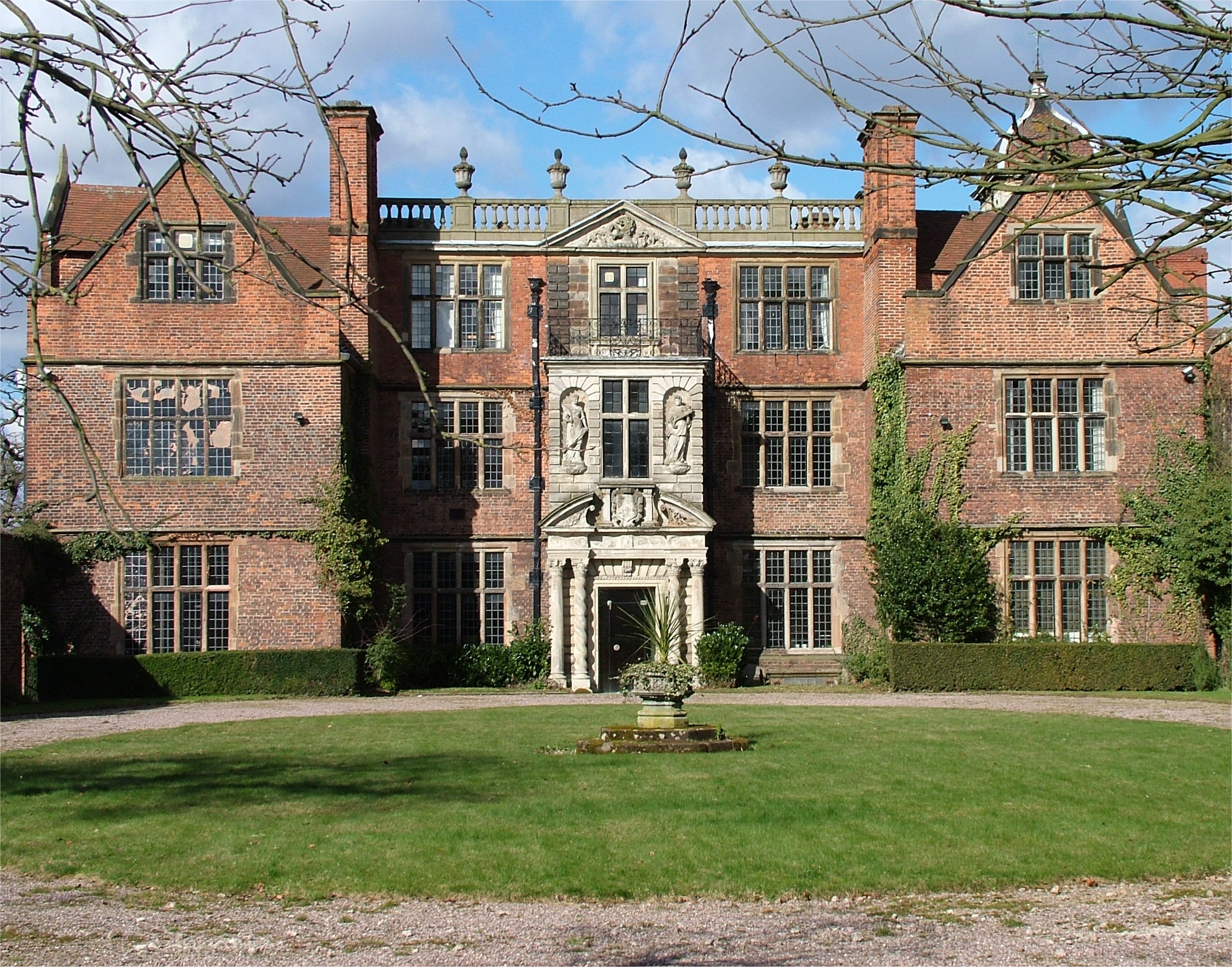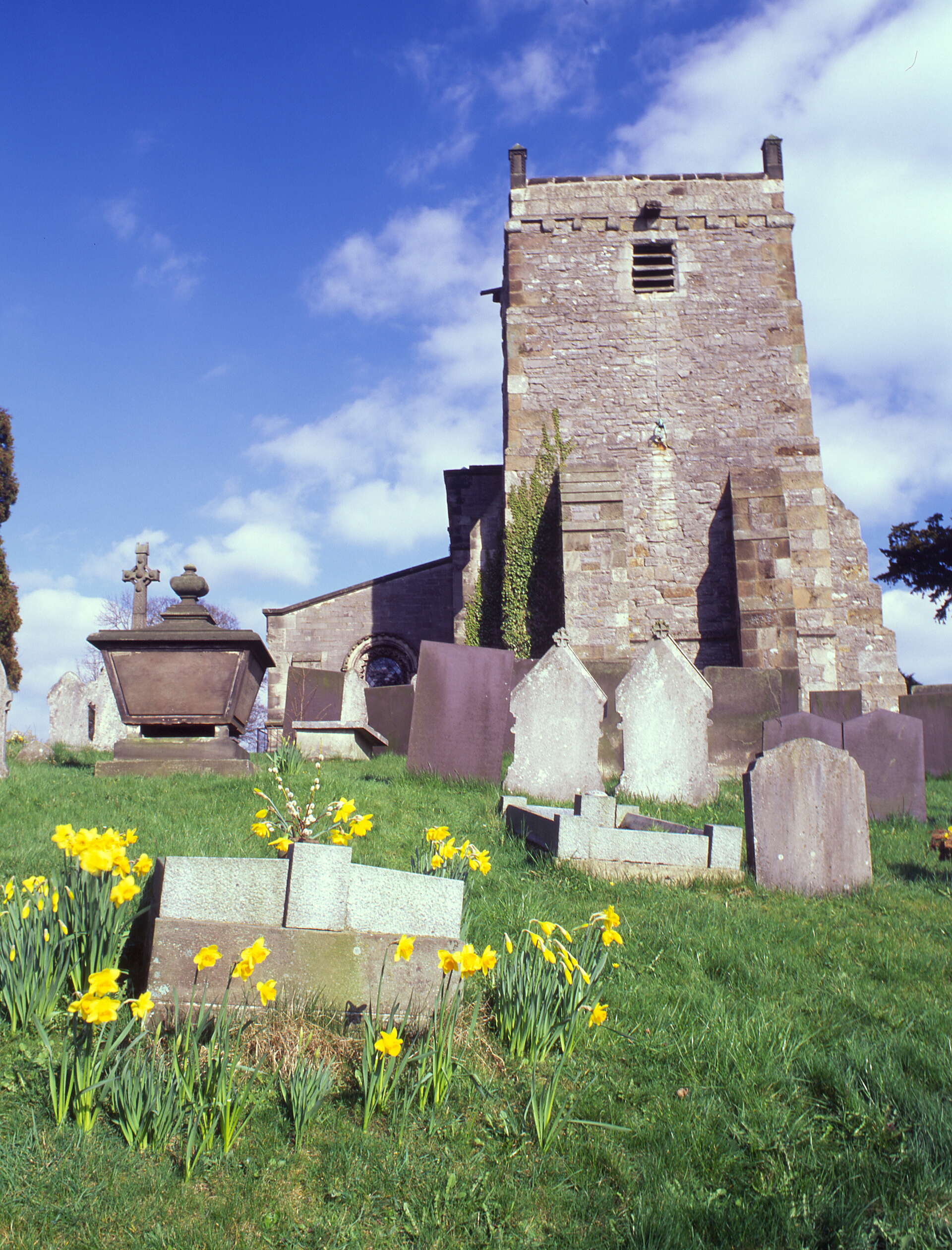|
Tissington Hall2
Tissington is a village in the Derbyshire Dales district of Derbyshire, England. The appropriate civil parish is called Tissington and Lea Hall. The population of this parish at the 2011 census was 159. It is part of the estate of Tissington Hall, owned by the FitzHerbert family since 1465. It is a popular tourist attraction, particularly during its well dressing week. It also gives its name to the Tissington Trail, a walk and cycle path which passes nearby. The Limestone Way, another long-distance path and bridleway, passes through the village itself. History Tissington ( Old English "Tidsige's farm/settlement") is recorded in the Domesday Book of 1086 as ''Tizinctun'', having been given to Henry de FerrersHenry was given a large number of manors throughout England, but particularly in Derbyshire. by the King: "In Tizinctun Ulchel, Edric, Ganel, Uluiet, Wictric, Leuric, Godwin had 4 carucates of land for geld. Land for 4 ploughs. Now in the demesne there (are) 3 ploughs ... [...More Info...] [...Related Items...] OR: [Wikipedia] [Google] [Baidu] |
Derbyshire Dales
Derbyshire Dales ( ) is a local government district in Derbyshire, England. The population at the 2011 Census was 71,116. Much of it is in the Peak District, although most of its population lies along the River Derwent. The borough borders the districts of High Peak, Amber Valley, North East Derbyshire and South Derbyshire in Derbyshire, Staffordshire Moorlands and East Staffordshire in Staffordshire and Sheffield in South Yorkshire. The district also lies within the Sheffield City Region, and the district council is a non-constituent partner member of the Sheffield City Region Combined Authority. A significant amount of the working population is employed in Sheffield and Chesterfield. The district offices are at Matlock Town Hall in Matlock. It was formed on 1 April 1974, originally under the name of West Derbyshire. The district adopted its current name on 1 January 1987. The district was a merger of Ashbourne, Bakewell, Matlock and Wirksworth urban distri ... [...More Info...] [...Related Items...] OR: [Wikipedia] [Google] [Baidu] |
Villein
A villein, otherwise known as '' cottar'' or '' crofter'', is a serf tied to the land in the feudal system. Villeins had more rights and social status than those in slavery, but were under a number of legal restrictions which differentiated them from the freeman. Etymology Villein was a term used in the feudal system to denote a peasant (tenant farmer) who was legally tied to a lord of the manor – a villein in gross – or in the case of a villein regardant to a manor. Villeins occupied the social space between a free peasant (or "freeman") and a slave. The majority of medieval European peasants were villeins. An alternative term is serf, despite this originating from the Latin , meaning "slave". A villein was thus a bonded tenant, so he could not leave the land without the landowner's consent. Villein is derived from Late Latin ''villanus'', meaning a man employed at a Roman villa rustica, or large agricultural estate. The system of tied serfdom originates f ... [...More Info...] [...Related Items...] OR: [Wikipedia] [Google] [Baidu] |
St Mary's Church, Tissington
St Mary’s Church, Tissington is a Grade II* listed parish church in the Church of England in Tissington, Derbyshire. History The church dates from the 12th century, and the chancel and south porch still date from this time. The doorway has a Norman tympanum with two standing sculpted figures. The church was restored in 1854 when a new aisle was added on the north side. Parish status The church is in a joint parish with * St Michael and All Angels’ Church, Alsop-en-le-Dale *St Edmund’s Church, Fenny Bentley * St Peter's Church, Parwich *St Leonard’s Church, Thorpe Memorials *Francis FitzHerbert (d. 1619) *Sir John FitzHerbert (d.1643) *Frank Richard Allsop (d.1912), died on ''Titanic RMS ''Titanic'' was a British passenger liner, operated by the White Star Line, which sank in the North Atlantic Ocean on 15 April 1912 after striking an iceberg during her maiden voyage from Southampton, England, to New York City, Unite ...''. Organ The church contains a pipe ... [...More Info...] [...Related Items...] OR: [Wikipedia] [Google] [Baidu] |
Listed Building
In the United Kingdom, a listed building or listed structure is one that has been placed on one of the four statutory lists maintained by Historic England in England, Historic Environment Scotland in Scotland, in Wales, and the Northern Ireland Environment Agency in Northern Ireland. The term has also been used in the Republic of Ireland, where buildings are protected under the Planning and Development Act 2000. The statutory term in Ireland is "protected structure". A listed building may not be demolished, extended, or altered without special permission from the local planning authority, which typically consults the relevant central government agency, particularly for significant alterations to the more notable listed buildings. In England and Wales, a national amenity society must be notified of any work to a listed building which involves any element of demolition. Exemption from secular listed building control is provided for some buildings in current use for worsh ... [...More Info...] [...Related Items...] OR: [Wikipedia] [Google] [Baidu] |
Jacobean Architecture
The Jacobean style is the second phase of Renaissance architecture in England, following the Elizabethan style. It is named after King James VI and I, with whose reign (1603–1625 in England) it is associated. At the start of James' reign there was little stylistic break in architecture, as Elizabethan trends continued their development. However, his death in 1625 came as a decisive change towards more classical architecture, with Italian influence, was in progress, led by Inigo Jones; the style this began is sometimes called Stuart architecture, or English Baroque (though the latter term may be regarded as starting later). Courtiers continued to build large prodigy houses, even though James spent less time on summer progresses round his realm than Elizabeth had. The influence of Flemish and German Northern Mannerism increased, now often executed by immigrant craftsmen and artists, rather than obtained from books as in the previous reign. There continued to be very little ... [...More Info...] [...Related Items...] OR: [Wikipedia] [Google] [Baidu] |
Tissington Cottages
Tissington is a village in the Derbyshire Dales district of Derbyshire, England. The appropriate civil parish is called Tissington and Lea Hall. The population of this parish at the 2011 census was 159. It is part of the estate of Tissington Hall, owned by the FitzHerbert family since 1465. It is a popular tourist attraction, particularly during its well dressing week. It also gives its name to the Tissington Trail, a walk and cycle path which passes nearby. The Limestone Way, another long-distance path and bridleway, passes through the village itself. History Tissington ( Old English "Tidsige's farm/settlement") is recorded in the Domesday Book of 1086 as ''Tizinctun'', having been given to Henry de FerrersHenry was given a large number of manors throughout England, but particularly in Derbyshire. by the King: "In Tizinctun Ulchel, Edric, Ganel, Uluiet, Wictric, Leuric, Godwin had 4 carucates of land for geld. Land for 4 ploughs. Now in the demesne there (are) 3 ploughs ... [...More Info...] [...Related Items...] OR: [Wikipedia] [Google] [Baidu] |
Tissington Hall2
Tissington is a village in the Derbyshire Dales district of Derbyshire, England. The appropriate civil parish is called Tissington and Lea Hall. The population of this parish at the 2011 census was 159. It is part of the estate of Tissington Hall, owned by the FitzHerbert family since 1465. It is a popular tourist attraction, particularly during its well dressing week. It also gives its name to the Tissington Trail, a walk and cycle path which passes nearby. The Limestone Way, another long-distance path and bridleway, passes through the village itself. History Tissington ( Old English "Tidsige's farm/settlement") is recorded in the Domesday Book of 1086 as ''Tizinctun'', having been given to Henry de FerrersHenry was given a large number of manors throughout England, but particularly in Derbyshire. by the King: "In Tizinctun Ulchel, Edric, Ganel, Uluiet, Wictric, Leuric, Godwin had 4 carucates of land for geld. Land for 4 ploughs. Now in the demesne there (are) 3 ploughs ... [...More Info...] [...Related Items...] OR: [Wikipedia] [Google] [Baidu] |
Sir Richard FitzHerbert, 9th Baronet
Sir Richard Ranulph FitzHerbert, 9th Baronet (born 2 November 1963), is a British landowner and holds the FitzHerbert baronetcy, which he inherited in 1989 along with the family home, Tissington Hall, on the death of his uncle, Sir John FitzHerbert. At the time of his inheritance, he was working as a wine merchant. He is the son of Major the Rev. David Henry FitzHerbert MC by his marriage to Charmian Hyacinthe Allsopp. Educated at Eton, he is an elected Conservative district councillor for the Parwich and Dovedale ward on Derbyshire Dales District Council. and is Chief Executive of Tissington Hall and estate. FitzHerbert married Caroline Louise Shuter in 1993. They had two children, but later divorced. He married secondly Fiona, now Lady FitzHerbert, at Tissington Hall in October 2011, becoming stepfather to her two children. Sir Richard appeared on the Weakest Link (Series 10, Episode 66), broadcast on 6 November 2008. He was voted off in Round 2, receiving 6 votes. Just 6 ... [...More Info...] [...Related Items...] OR: [Wikipedia] [Google] [Baidu] |
Charles I Of England
Charles I (19 November 1600 – 30 January 1649) was King of England, Scotland, and Ireland from 27 March 1625 until his execution in 1649. He was born into the House of Stuart as the second son of King James VI of Scotland, but after his father inherited the English throne in 1603, he moved to England, where he spent much of the rest of his life. He became heir apparent to the kingdoms of England, Scotland, and Ireland in 1612 upon the death of his elder brother, Henry Frederick, Prince of Wales. An unsuccessful and unpopular attempt to marry him to the Spanish Habsburg princess Maria Anna culminated in an eight-month visit to Spain in 1623 that demonstrated the futility of the marriage negotiation. Two years later, he married the Bourbon princess Henrietta Maria of France. After his 1625 succession, Charles quarrelled with the English Parliament, which sought to curb his royal prerogative. He believed in the divine right of kings, and was determined to govern acc ... [...More Info...] [...Related Items...] OR: [Wikipedia] [Google] [Baidu] |
English Civil War
The English Civil War (1642–1651) was a series of civil wars and political machinations between Parliamentarians ("Roundheads") and Royalists led by Charles I ("Cavaliers"), mainly over the manner of Kingdom of England, England's governance and issues of religious freedom. It was part of the wider Wars of the Three Kingdoms. The First English Civil War, first (1642–1646) and Second English Civil War, second (1648–1649) wars pitted the supporters of King Charles I of England, Charles I against the supporters of the Long Parliament, while the Third English Civil War, third (1649–1651) saw fighting between supporters of King Charles II of England, Charles II and supporters of the Rump Parliament. The wars also involved the Covenanters, Scottish Covenanters and Confederate Ireland, Irish Confederates. The war ended with Parliamentarian victory at the Battle of Worcester on 3 September 1651. Unlike other list of English civil wars, civil wars in England, which were mainly ... [...More Info...] [...Related Items...] OR: [Wikipedia] [Google] [Baidu] |
Elizabeth I Of England
Elizabeth I (7 September 153324 March 1603) was Queen of England and Ireland from 17 November 1558 until her death in 1603. Elizabeth was the last of the five House of Tudor monarchs and is sometimes referred to as the "Virgin Queen". Elizabeth was the daughter of Henry VIII and Anne Boleyn, his second wife, who was executed when Elizabeth was two years old. Anne's marriage to Henry was annulled, and Elizabeth was for a time declared illegitimate. Her half-brother Edward VI ruled until his death in 1553, bequeathing the crown to Lady Jane Grey and ignoring the claims of his two half-sisters, the Catholic Mary and the younger Elizabeth, in spite of statute law to the contrary. Edward's will was set aside and Mary became queen, deposing Lady Jane Grey. During Mary's reign, Elizabeth was imprisoned for nearly a year on suspicion of supporting Protestant rebels. Upon her half-sister's death in 1558, Elizabeth succeeded to the throne and set out to rule by good counsel. S ... [...More Info...] [...Related Items...] OR: [Wikipedia] [Google] [Baidu] |








